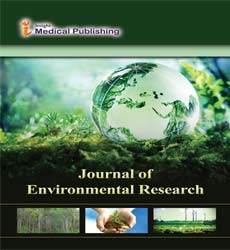Preparation and characterization of a bionanocomposite membranes with antibacterial properties composed by poly(l-lactic acid) and silver nanoparticles
Abstract
Statement of the Problem: The use of biopolymers in the medical area is extremely interesting for tissue engineering because they provide a favorable environment for the growth and differentiation of cells. Among the distinct applications, one of significant interest is related to the odontological area. In this area, a problem of major concern is the periodontal disease. It consists in an infectious process characterized by damages in the periodontal tissues induced by bacteria present in the gingival sulcus. Common treatments involve the use guided tissue regeneration (GTR) by using bioabsorbable membranes, but the commercially available membranes does not contain nanostructured antibacterial agents, such as silver nanoparticles. Methodology & Theoretical Orientation: In the present study, silver nanoparticles (AgNp) were synthesized in an aqueous media and transferred to an organic solvent by using a fatty amine as a phase transfer agent. Such solvent was used in different amounts with fresh solvent to prepare functionalized PLLA membranes. The AgNp were characterized by UV-Vis spectrophotometry and transmition electron microscopy (TEM). Atomic absorption spectroscopy (AAS) was used to quantify the amount of silver presented in the solvent used to produce the membranes. The membranes, functionalized with different concentrations of AgNp, were characterized by thermal gravimetric analysis (TGA), differential scanning calorimetry (DSC), field emission scanning electron microscopy (FESEM) and standardized antibacterial assays (ASTM E-2180). The degradation behavior of the membranes in artificial saliva was also investigated. Conclusion & Significance: The results revealed a reduction of the thermal stability and an increase of the crystallinity of the membranes by increasing the silver nanoparticles content. Moreover, the membranes containing concentrations of AgNp greater than 13 μg / g PLLA showed excellent antibacterial activity against the Gram positive bacteria Staphylococcus aureus. Such findings indicated that the produced antibacterial membranes have potential application in guided tissue regeneration treatments, such as in periodontal diseases.
Open Access Journals
- Aquaculture & Veterinary Science
- Chemistry & Chemical Sciences
- Clinical Sciences
- Engineering
- General Science
- Genetics & Molecular Biology
- Health Care & Nursing
- Immunology & Microbiology
- Materials Science
- Mathematics & Physics
- Medical Sciences
- Neurology & Psychiatry
- Oncology & Cancer Science
- Pharmaceutical Sciences
